Finding Magic in Asturias, Spain's Untouched Province
The Shrine of Covadonga, mountains, and lots of Cider 🍏🍻
Lately, I feel like I’ve neglected the travel diary side of my little corner of the internet. So, after my family's trip to Spain, I felt compelled to put pen to paper (or fingers to keyboard) to talk about one of the most beautiful places I have ever seen, and the home of my great-grandfather, Angel. Let’s go! 🚙 🗺️ 🏔️
Deep Roots
Spain in the collective imagination tends to inspire a specific image: sun-soaked golden hues, Moorish architecture, women in fiery red dresses dancing flamenco, enraged bulls plowing through medieval cities, and, of course, the gothic beauty of Gaudí’s masterpieces dotting famous Barcelona. However, my family's road trip to this oft-travelled destination held many surprises and looked nothing like what resides in the popular imagination.
The original intent was to travel to my great-grandfather’s hometown of Cornellana, a tiny hamlet nestled in the mountains of Asturias, just 30 minutes away from the capital city of Oviedo, and return to the house where he grew up, of which we only had a photo and a sparse address to guide us.
My mother often talks about how he died in Cuba, longing to return to his homeland, where he described how “the apples grew big and juicy” in a thick, raspy accent. After the revolution in 1959, it was no longer a possibility. The trip was not just for us to explore the country or to enjoy a well-deserved vacation, but to fulfill his wish.
Nevertheless, I did not expect to be so deeply impacted by his home. Asturias is one of Spain’s northern provinces, and it paints a completely different picture than Spain’s more tourist-filled centers. With its vast, rumbling grey peaks known as Los Picos de Europa (The Peaks of Europe) and its lush emerald green valleys, hidden chapels, and wild pasturing animals, it reminded me more of Middle-earth than the land of paellas and bullfighting. Needless to say, certain parts look like they were born from Tolkien’s mind.
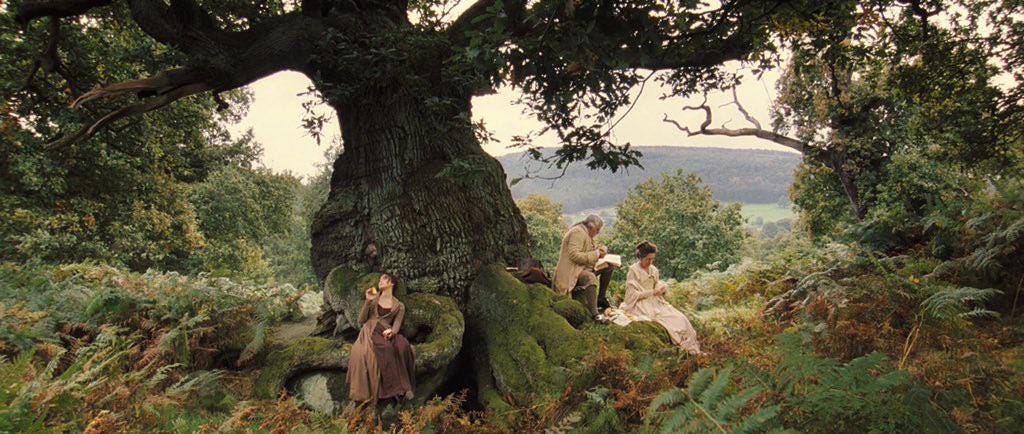
The landscape alone made me forget all my worries and unlocked my imagination. A bad mood brought on by my questioning all my life decisions, and a master’s degree in overthinking; this place made everything go away. No matter what people say, problems do follow you on vacation; they don’t magically disappear. But the mountains were so vast, the Asturian countryside made me think about how small it all is, how small all my worries were.
After all, “what are men to rocks and mountains!” to borrow Lizzy’s words. Asturias’ Peaks became my Derbyshire. It’s hard to indulge in foul moods when this much beauty surrounds you. The deeper into the countryside we went, the more like Bilbo I became: “Mountains, Gandalf, I want to see mountains!” And the incredible cuisine only added to the experience: sparkling apple cider, endless cheese platters, and thick bean and meat stews. Not to mention centuries-old monasteries on an ancient pilgrimage road.
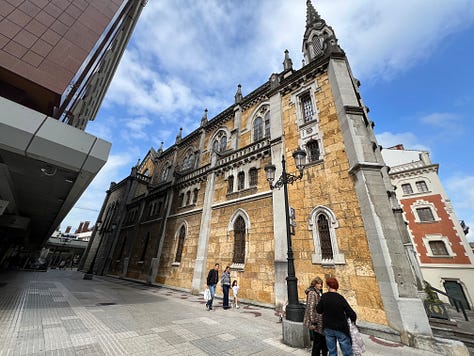
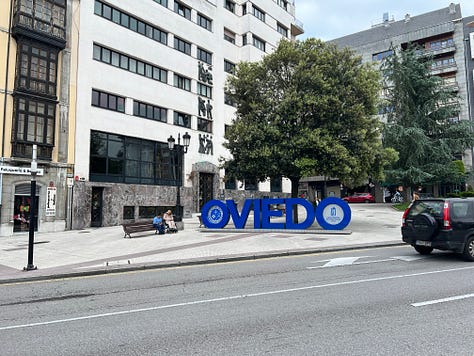
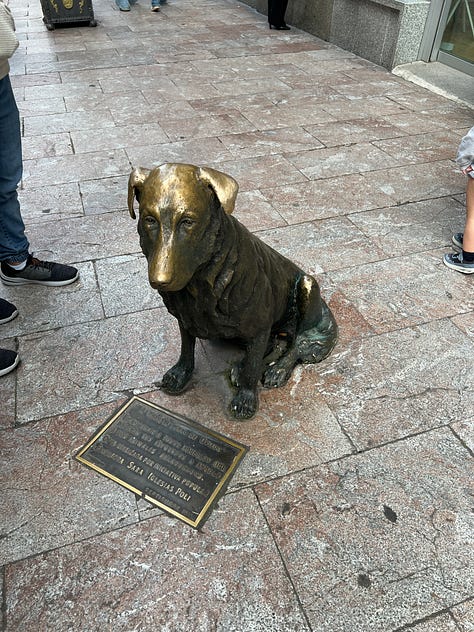
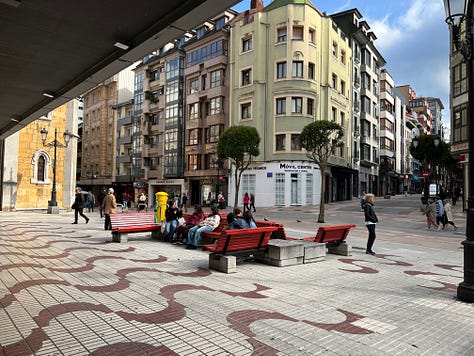
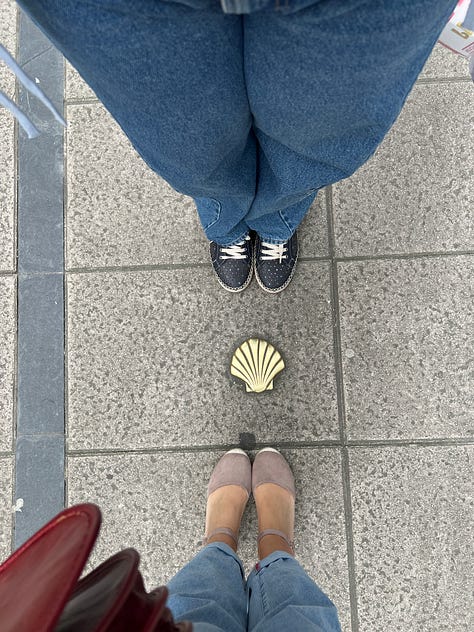
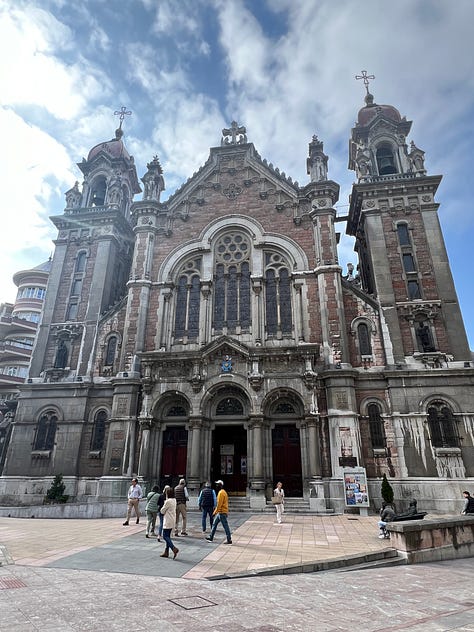
Cider & Churches
While my grandfather lived in Cornellana, we stayed in Oviedo, a rich, beautiful city, and the capital of Asturias. Oviedo is famous for its bronze sculptures, Romanesque architecture, and, especially, its apple orchards; Asturias produces over 80% of the cider in Spain! The city is also home to the famous Calle Gascona, known as the “Boulevard of Cider” — full of Sidrerias — and where we had some of our favourite meals. At the entrance of this boulevard is a restaurant known as Tierra Astur El Vasco, decorated with waves of empty bright green cider bottles on the walls, ceiling, and even forming part of large fountains that flowed throughout the restaurant.
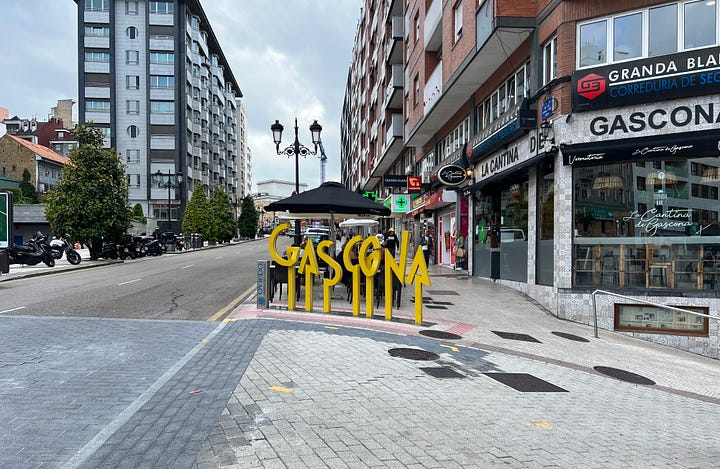
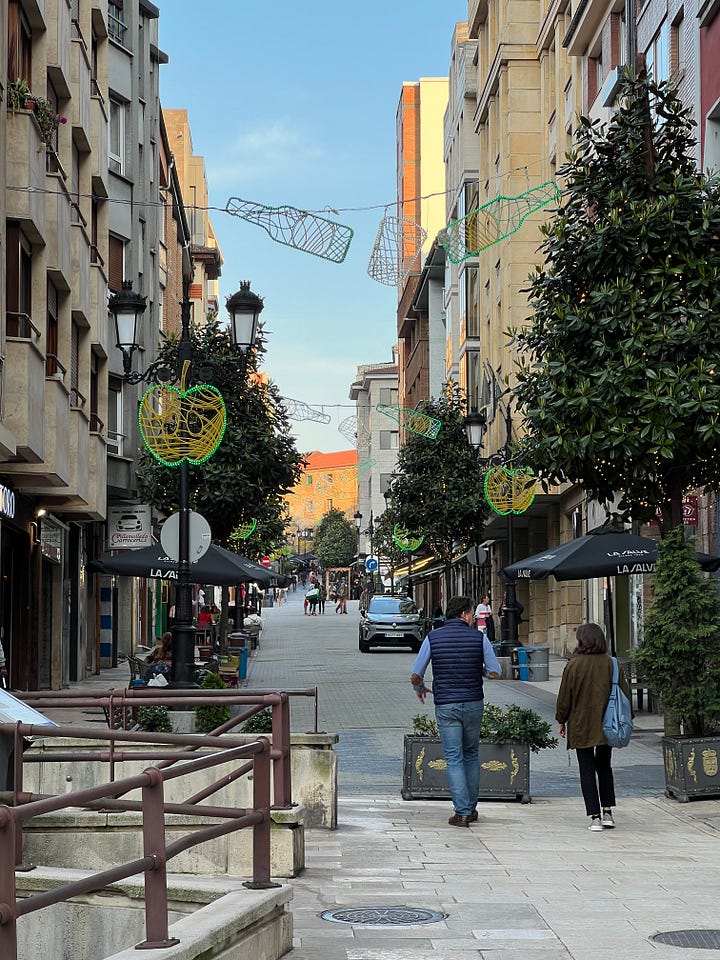
To say we ate well is a vast understatement. The restaurant’s menu alone felt less like a menu and more like an atlas of food with a whopping 30 pages. Asturias is also known as the largest cheesemaking region in Europe, often referred to as “the land of cheeses,” producing over 300 different types of cheese. This isn’t surprising, considering the region’s verdant valleys and snowcapped, rugged peaks are full of goats, cows, and sheep. And so, we chose to begin our meal with a platter of traditional Asturian cheeses: smoky flavors, crisp and sharp goat cheeses, all complemented by dill pickles and sweet marmalade, and hazelnuts. After our cheesy starter, we received our main entree, an enormous platter of juicy, tender steak, potato fries, and grilled peppers. My sister, on the other hand, had a plate of fried meat (which she described as pork katsu), breaded and juicy!
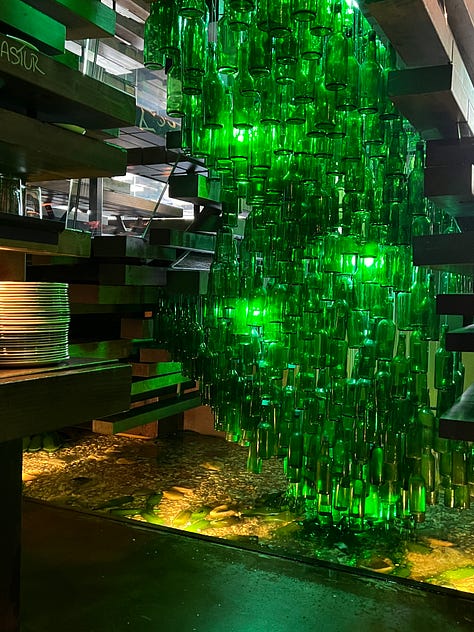
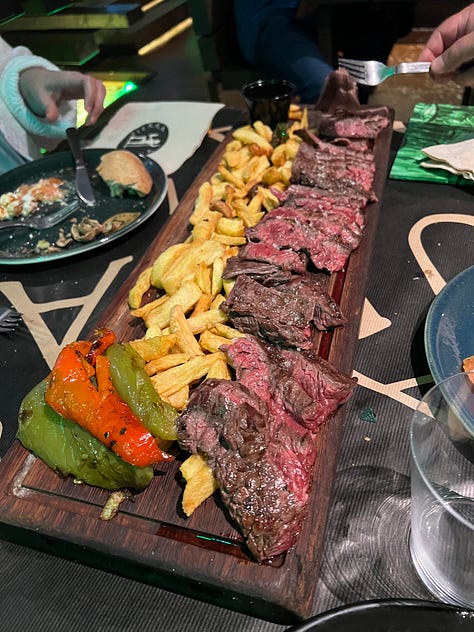
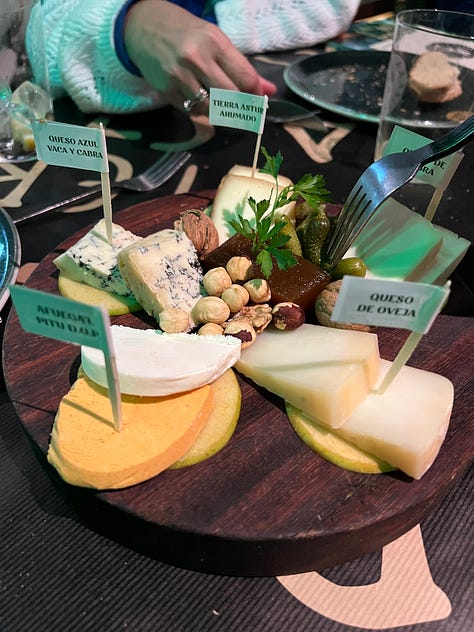
All paired, exceptionally, with apple cider. The manner of serving cider in Asturias is both entertaining and potentially messy without an experienced hand. The cider is held up high above the head with one hand and poured into a glass below, held at the waist level. Drunk in a culine or gulp, meaning you won’t get an entire glassful but rather, a bit at a time. This process, known as escanciado, is not just a fun pouring method, but the final important step in the traditional cider-making process. Historically, the northwestern regions of Spain are rooted in the traditions of ancient Celtic settlements. These tribes have been producing cider since before the birth of Christ, and today, Spanish hard cider is still very closely tied to these regions. Asturias, especially, is still very much in touch with its Celtic past.
This also explains my lifelong obsession with the bagpipes!
Cornellana
We set out for Cornellana late in the afternoon of our first day in Oviedo. The sun was setting behind the peaks, and we wanted to end the day by at least finding my grandfather’s house. To say Cornellana is a sleepy little town is an understatement. Oxen and sheep make up half of the population, with orchards, the running river, and the elderly making up the other half. The only notable tourist attraction is the Monastery of San Salvador de Cornellana, which stands proudly over the rural village.
The monastery was built in 1024, and today it serves as an important halfway point on the pilgrimage route to Santiago de Compostela in Galicia. Indeed, if you visit Spain, don’t forget to look down. You may see golden shells lining the streets, indicating the route(s) to Compostela. The monastery includes the church of San Salvador, the adjoining monastery, baroque cloisters (originally medieval in origin), and a space with 26 beds for pilgrims making their way to Galicia. The majority of the structure is Romanesque and Baroque in style, built during the 17th and 18th centuries. Like many historic buildings, it has a long history of fires, wars, and reconstruction.
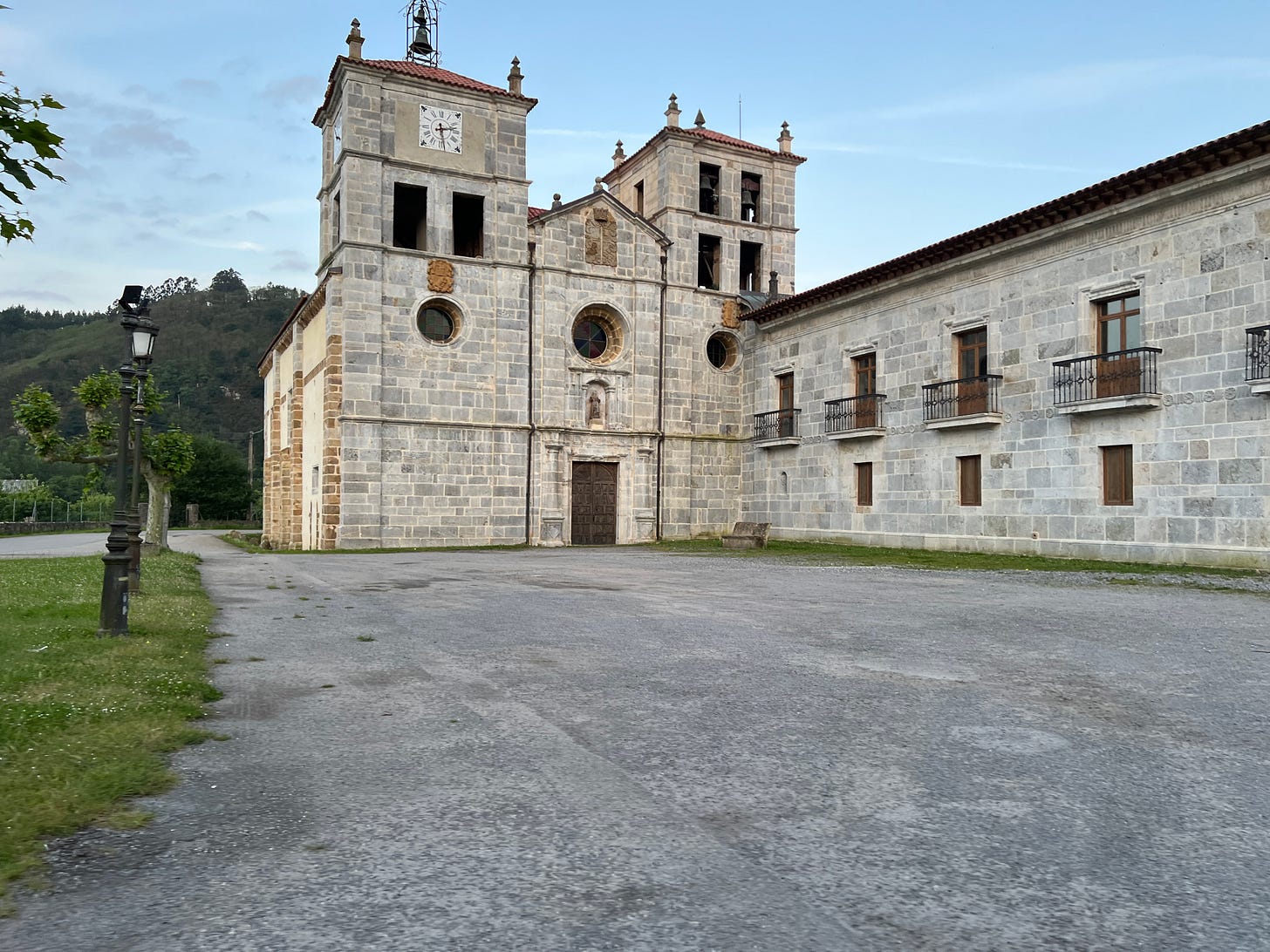
It also includes several interesting stone carvings of a bear nursing a young girl, one of which sits atop one of the grand entrances. Aptly named the “Bear Gate” or “Puerta de la Osa,” this scene is linked to the monastery’s founding in the 11th century; a commemoration for the salvation of a young princess by a bear.
Yes, you read that correctly.

Legend has it, when the Infanta Cristina, daughter of King Bermúdez II of León, got lost in the nearby woods of Cornellana as a toddler, she was saved thanks to the protection of a bear that suckled her and shielded her from other wild animals. She then went on to found the monastery in gratitude and even retired to it later in life. She lived there until she died in 1050.
As for finding our grandfather’s house, all I can say is that I’m grateful my dad is an extrovert. We followed the directions we were given to no avail, and my dad stopped to ask a group of women talking at the entrance of the monastery for directions. To make a long story short, we ended up being family. One of the women, Marissa, with a short silver-white bob and a pale green scarf, turned out to be the daughter of my great-grandfather’s brother, Louis. We came to find a house, and we ended up finding family, as she is one of three sisters. Amparo and Gloria are the other two.
And it's just as well because she’s the reason we found Angel’s house. At the end of the day, 80 years later, we managed to fulfill his dream, my mom more than anyone. As she stood in front of his home and recreated the only photograph we have of the building, seemingly untouched by time.
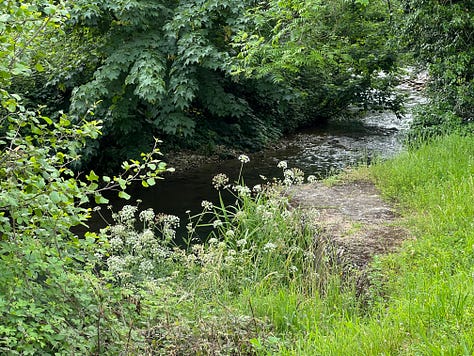
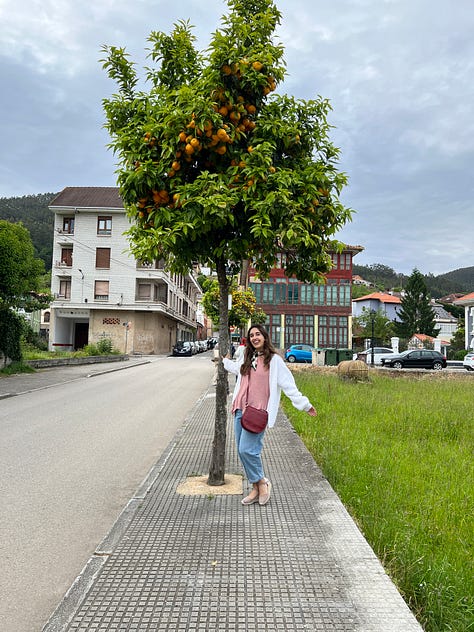
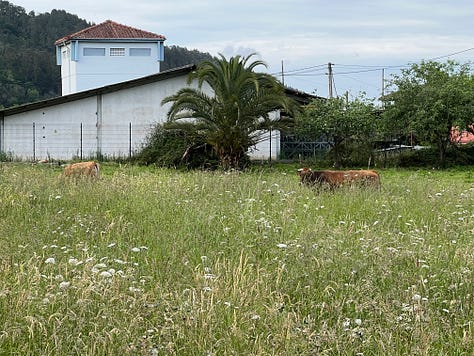
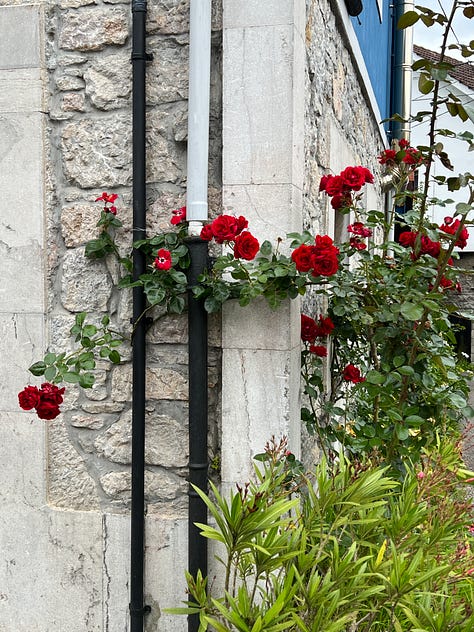
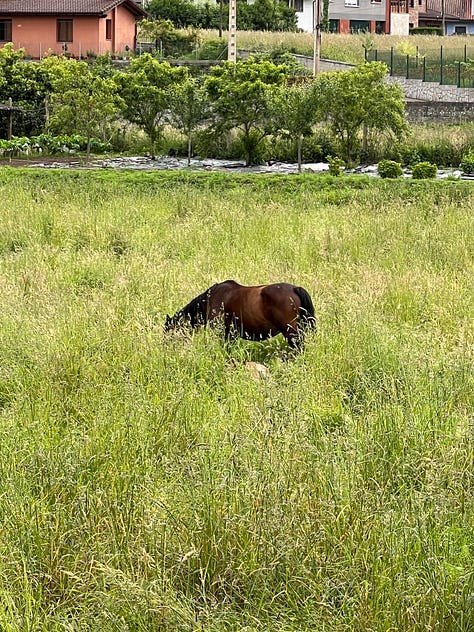
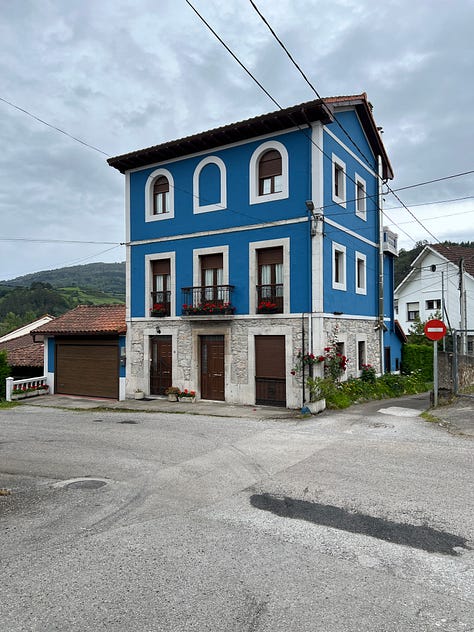
The rest of our time in Cornellana was spent visiting with the three sisters in their spacious multi-room apartments, poring over a plethora of old family photos and good stories about dodging nuns during Catholic school. They chain-smoke like anything, accessorize like it’s going out of style (hello chunky necklaces and flowing scarves), and are built like steady, robust trees. I hope I’m as stylish when I make it to my 80s. We finished our visit at a local restaurant, sitting outside on a long table, drinking cider and eating breaded and fried sardines, a local appetizer. It was a fitting farewell to one of the most peaceful places on earth.
Covadonga
The next stop on our trip through Asturias took us through the Picos de Europa, also known as The Peaks of Europe, a national park and mountain chain that spans 20km across Asturias, Cantabria, and Castile and León. They form a large part of the Cantabrian Mountains in Northern Spain. The closer you get to the area, the taller and rockier the mountains become, until you feel engulfed by their grey, craggy bodies.
We stayed in Cabrales, another small (and cheese-oriented 🧀 ) town situated in the middle of the Peaks. And I say cheese-oriented because there are Cuevas de Quesos (Cheese caves) or shops dedicated to selling and making cheese, dotted throughout. It’s also where the most expensive cheese ever sold at auction was made (for a whopping $20,500 euros)!! Must have been a hell of a cheese.
An interactive sculpture of a rideable cheese wheel also marks Cabrales as a cheesy destination!
We stayed in a very nice hotel in town, a chain appropriately called Hotel Picos de Europa. This is where having a car will make your life much easier because several major sites are within short driving distance of this town. The next day, we made our way to our first stop, and a major bucket list item for yours truly: the Shrine at Covadonga. Imagine driving up a winding road with nothing but trees above you, only for a small chapel built into the cliffside to suddenly appear into view!
The Shrine of Covadonga is known as a major Catholic sanctuary and pilgrimage site, known for the Santa Cueva (Holy Cave), the Shrine or “hanging chapel,” a 12th-century monastery, and the Basilica of Santa Maria la Real de Covadonga. All located right next to each other in this incredible site, which is deeply intertwined with the history of The Reconquista, the Christian effort to reclaim Spain from the invading Moors and Muslim rule. According to tradition, Don Pelayo, a Visigothic nobleman, and his forces began the reconquest of the peninsula in the Peaks, seeking refuge in the mountains.
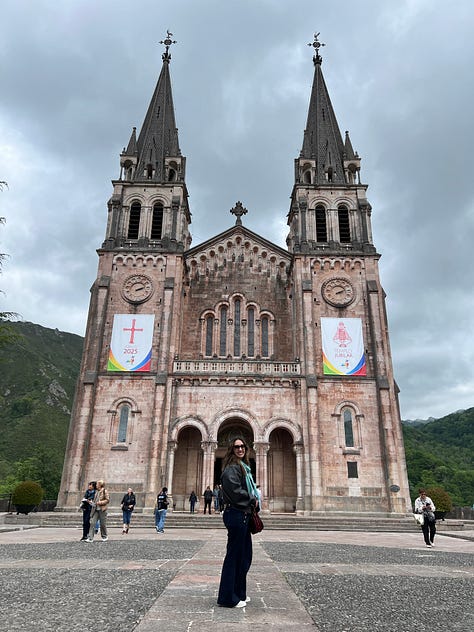

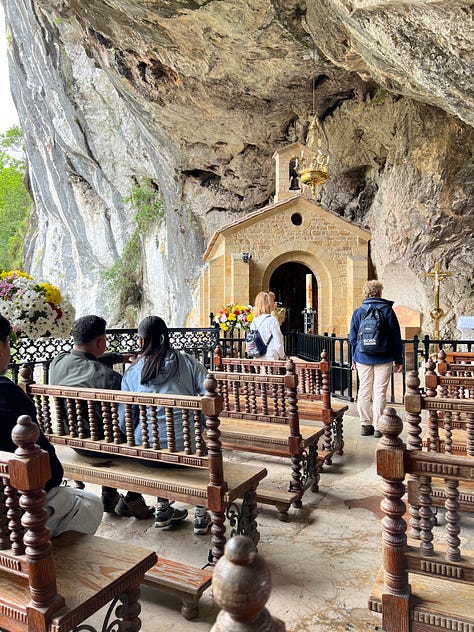
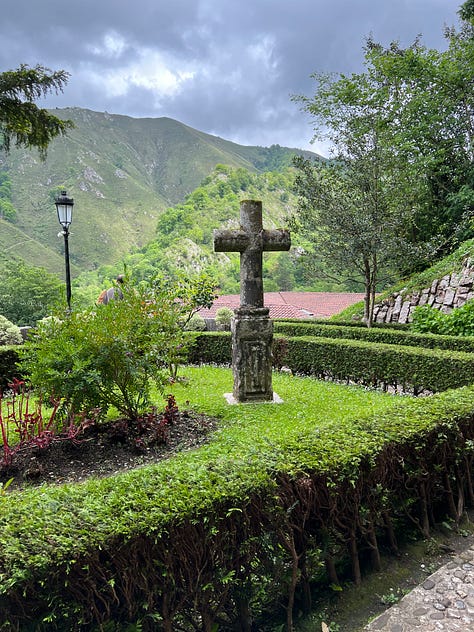
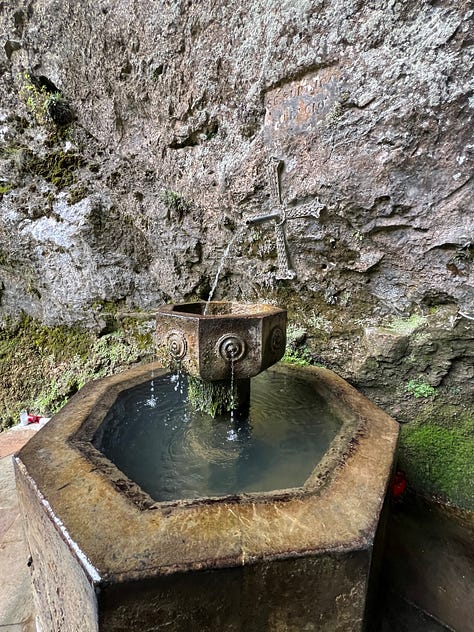
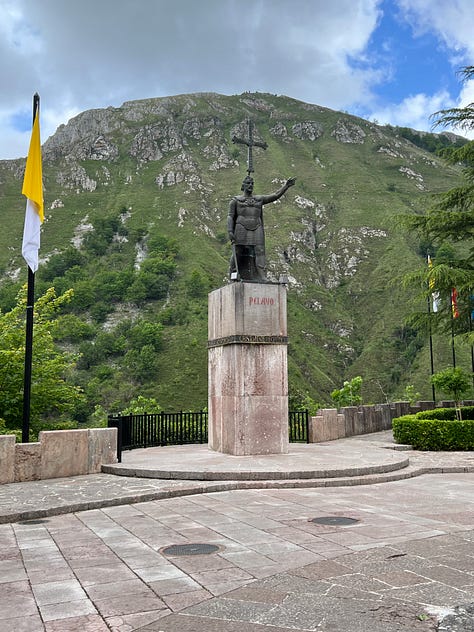
In 722, before the Battle of Covadonga, it is said that Pelayo prayed to the Virgin Mary for assistance in the Holy Cave. She granted him a cross that he would brandish into battle, and Pelayo’s forces achieved a decisive victory thanks to her intervention. The cross is supposedly the one in the Holy Cave today. The Arabs retreated, and Pelayo was made the first king of Spain, founding the Kingdom of Asturias. Thus, the shrine is dedicated to Our Lady of Covadonga, also known as “La Santina.” The best part about the site is that you can easily walk from one place to another (Church → Cave → Chapel).
Covadonga is easily one of the most beautiful places I have ever seen, and the site truly defies description. The basilica is fortress-like and surrounded by dense forests and misty mountains; the shrine and cliff-side chapel are perfectly in view towards the back of the building. It’s important to note that photos are not allowed in the church or in the Holy Cave to preserve the sanctity of the site. To reach the chapel, you have to walk through the Cave. To say the gravitas of the site affected us was an understatement; silence and a little bit of reverence were king. Until we reached the chapel and realized collectively that we were standing at the edge of a mountain! At the edge, you can see the waterfall that flows from the cave into a grotto below. It is also where King Pelayo, as well as King Alfonso I, are buried.
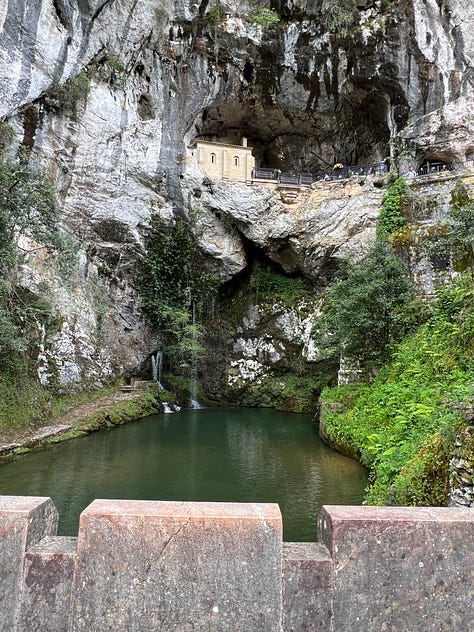
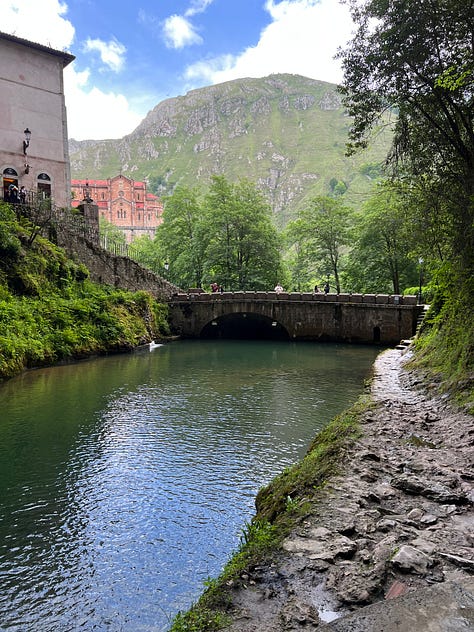
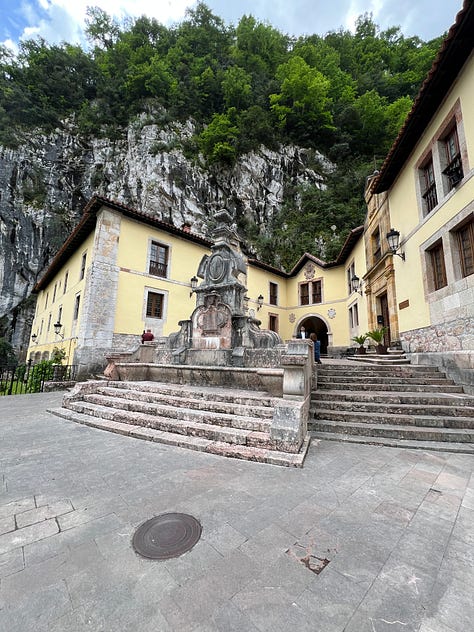
The oohs and aahs then just took over! The best way to get to this site is by car or bus tour. I highly recommend renting a car if at all possible, just to have the freedom of coming and going. Parking was (surprisingly) not an issue, and there were plenty of spaces available as well as clean facilities, and I say this as someone with a bladder the size of an acorn. Next to the chapel is the monastery, known as the Old Collegiate Church of San Fernando, which you can reach by taking the Scala Santa or “holy stairs,” a set of 28 marble steps leading down to ground level.
The monastery also has a long history of housing those who presided over and protected the shrine. While much of it has been restored over the years, the medieval cloisters are still largely intact. The best part, in my humble opinion, is the view behind the lion fountain that marks the entrance to the monastery. The rolling verdant landscape behind it is the very definition of picturesque. However, before leaving, we couldn’t resist trekking into the grotto below the hanging chapel! My mom is quite the adventurer, and I often follow her when she gets into her antics. The view from behind the waterfall is just as good, with the bridge and basilica in the background. The presence of a cross carved into the mountain, pouring water into a basin, was also a fun surprise. The water is not potable, but it was cool nonetheless.
The entire Covadonga site has a long, beautiful, and rich history with a spiritual presence that is still very much alive. Pilgrims and visitors come from all over the world to visit, and I have to say, it is incredibly worth it.
Cows & Mountain Lakes
After the Covadonga Sanctuary, we decided to take a trip to the nearby famous Lakes of Enol, also known as the Lagos de Covadonga. These glacial lakes, Lake Enol and Lake Ercina, form the original center of the Picos National Park. The winding roads ascending from Covadonga to the lakes are not for the faint of heart! We had half a mind to build a statue to my dad for navigating these tricky routes. However, if you’re careful, it is absolutely doable. And the drive, incredibly scenic with rolling green hills and mooing cows dotted across the landscape. I could almost hear Howard Shore’s iconic score play as I looked out the window, and it was very easy to pretend I was traveling through the Shire, or embarking on an epic quest.
Luckily, even way up here, there are eating establishments! Restaurant Los Lagos Bar Maria Rosa has been servicing travelers who make it to Lake Ercina since 1950. It’s a cozy little place with a small, yet full menu, yellow walls, and a wood beam ceiling. To eat, we chose a traditional bean and beef stew called Fabada; thick, rich, and creamy, it was a godsend after braving the chilly lakes. Even in May, it was cold, so do bring a jacket or windbreaker if you decide to visit during the shoulder seasons.
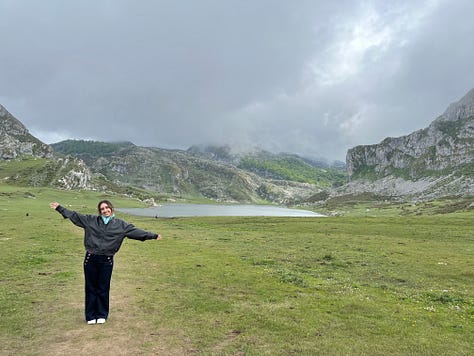
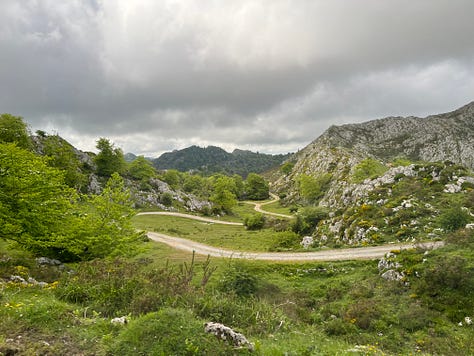
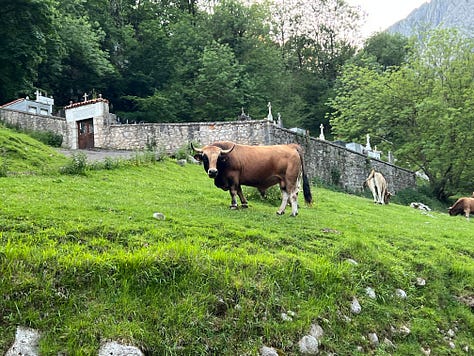
Near Cabrales, you could also go up a lift that takes you through the mountains into Naranjo de Bulnes, an adorable fairytale village within the National Park. This portion of the Picos is very walkable with paved trails and signage directing you to the village, where you can enjoy one of the many restaurants and amenities located there. The weather was perfect for this little day-trip, bright sunshine and not a cloud in sight!
Among the many stone buildings that you come across, the closer you get to the village, was a small chapel dedicated to the Virgin of the Snows, the patron of the area. The chapel consists of a small room that looks out into a cemetery in the middle of a meadow, with a shrine of the Virgin behind an elegant iron gate. The chapel is crowned with two bells and is surrounded by massive trees, the grey peaks in the near distance providing the perfect dramatic backdrop.

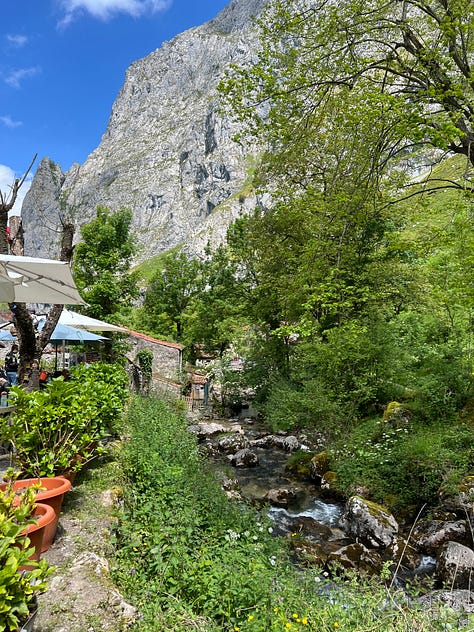
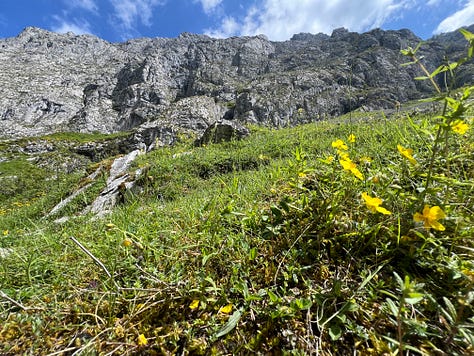
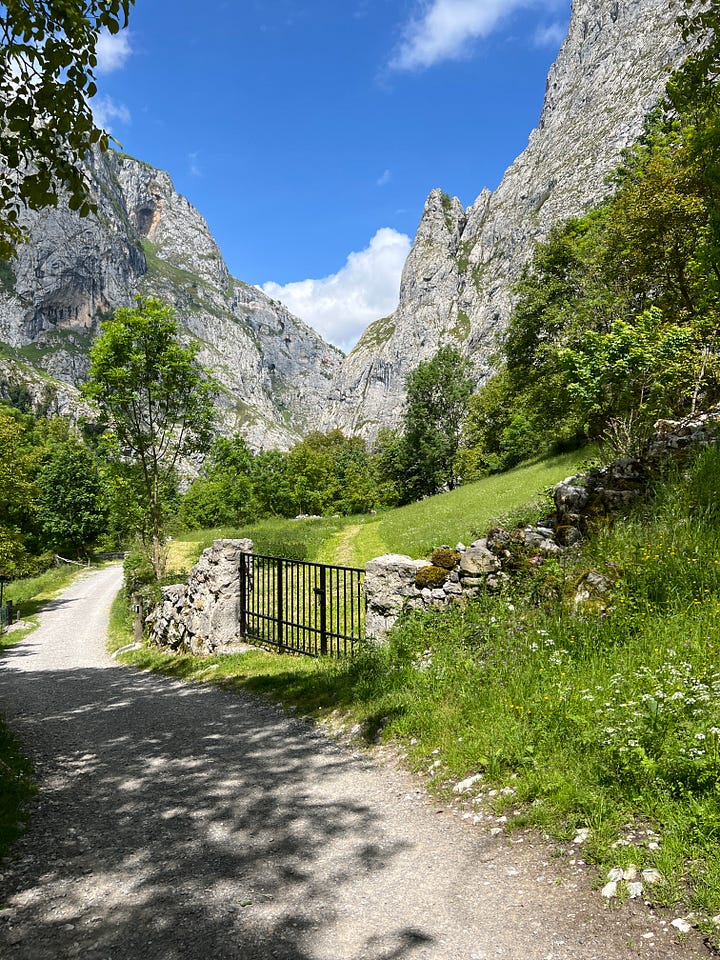
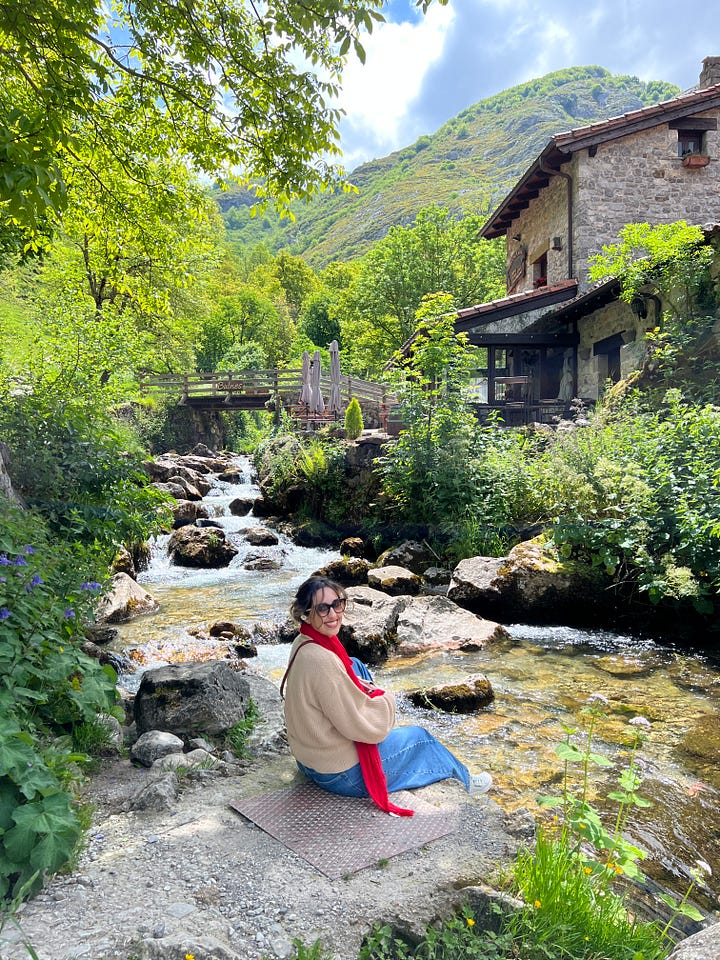
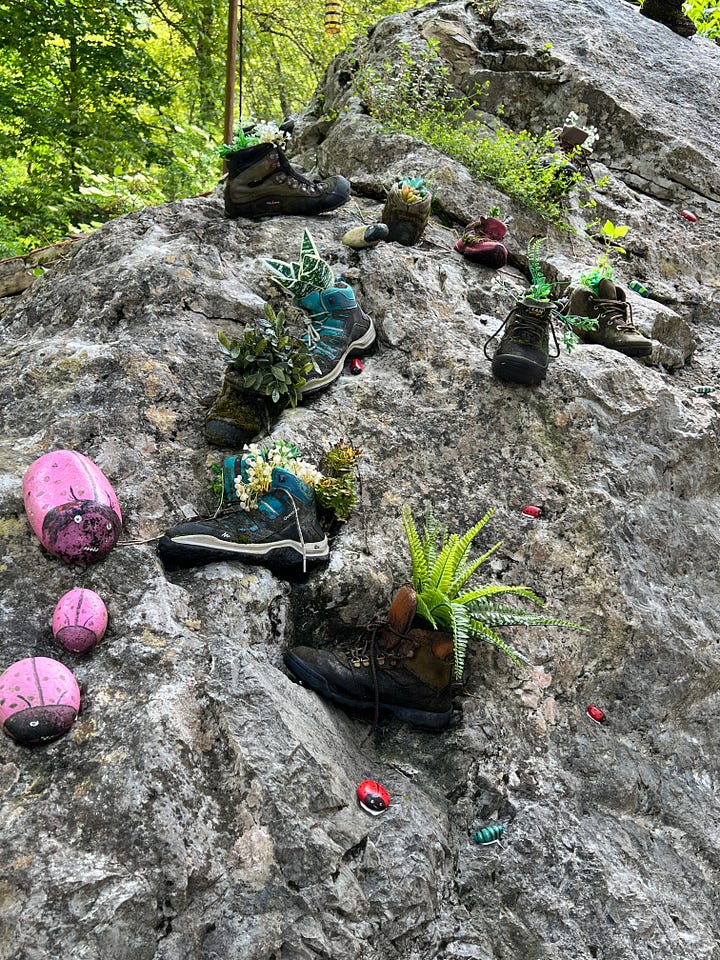
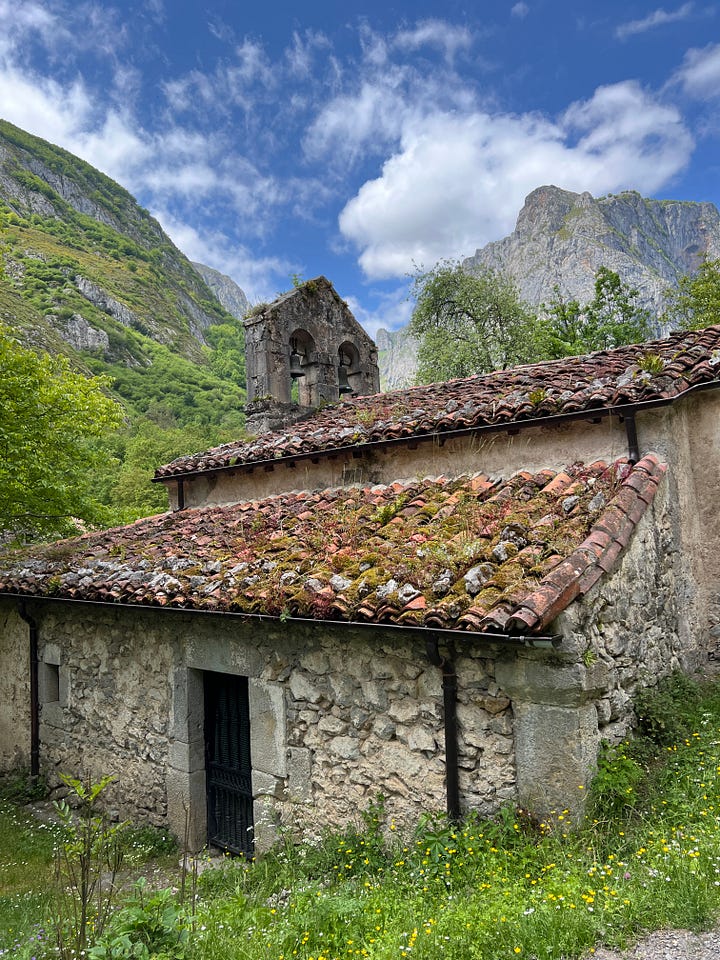
The village itself is full of cobblestone streets and decorated with a ton of ceramic art decorating the facades of buildings, and hiking shoes acting as planters for flowers. We ate at a restaurant that bordered the rushing river and ate what is possibly my favourite Spanish dish of all time: tortas with picadillo. These hollow shells are made of corn with spicy, juicy ground beef on top. Paellas were not missed or wanted in this moment. It was all, of course, accompanied by Asturian cider.
At the end of the day, Asturias continues to be my favourite part of the trip. Not even Barcelona’s grandeur could change my mind. The peace and tranquility, not to mention, beauty of the Peaks, is enough to make one decide to live there forever. Fulfilling my great-grandfather’s wish is what led us to Asturias in the first place, but the mountains beckon and call, and we will definitely be going back.










